10 Orca Deaths In Captivity At Marine Parks
If you still need convincing that captivity is deadly to dolphins and other cetaceans, here’s the evidence from so many orca deaths in captivity.
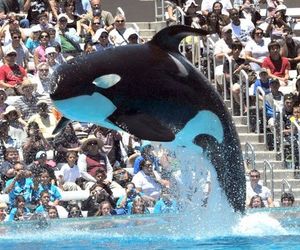
Animals dying is a natural process: we all know that. But have you ever wondered about the many orca (killer whale) deaths in captivity?
Why is it that none of them died of old age?
So far, at least 167 orca whales have died in captivity. And, they died long before their kind usually do in the wild. In the wild, these creatures can live up to 60/70 years for males and 80/100 for females.
In captivity, you’re looking at averagely 10/15 years.
From all the sad tales of killer whale deaths, here are 10 orca deaths in particular that made headlines.
10 Famous Orca Deaths In Captivity
1) Moby Doll
Location: Vancouver Aquarium
Time In Captivity: 3 months
Date Of Death: 9 September 1964
Age At Time Of Death: 5 years
Moby Doll was a 4.6 meter (15 feet) long, 1-ton male orca (killer whale) put up for display at the Vancouver Aquarium. He was the second ever of the species to be captured or displayed in a public aquarium exhibit.
This orca was caught near East Point, Saturna Island in British Columbia in 1962.
Moby Doll was actually harpooned and shot at in the process of the capture but did not die. They then towed the orca back to Vancouver and put him on public display.
The animal would not eat for the first two months in captivity.
Observers said: “The whale seemed to be suffering from shock…For a long time, Moby Doll…would not eat. It was offered everything from salmon to horse hearts, but the whale only circled the pool night and day in a counterclockwise pattern.”
Eventually after almost two months in captivity, Moby Doll began eating but died a month later.
This particular killer whale is credited with providing information to the science world about the species. So little was known about them at the time and it gave a more positive impression about orcas in general.
Previously, the assumption was that these were “bloodthirsty sea monsters” but people were surprised at the gentleness of the creature up close.
Consequently, Vancouver journalist Mark Leiren-Young wrote a book on the subject titled The Killer Whale Who Changed the World.
Sadly, this orca had to pay the ultimate price in the process.
2) Sumar
Location: SeaWorld San Diego
Time In Captivity: 12 years
Date Of Death: 7 September 2010
Age At Time Of Death: 12 years
The male orca, Sumar, was born in captivity at SeaWorld Orlando to Taima and Tilikum. Within just a few months of birth, he had to be taken away from his mother Taima because she became aggressive towards him. A sign of stress maybe?
Sumar was known to be very friendly to humans and other orcas as well. He was never aggressive and was in fact quite laid back.
3) Chappy
Location: Kamogawa, SeaWorld Japan
Time In Captivity: 3.5 years
Date Of Death: April 1974
Age At Time Of Death: 5 years
This female orca was captured in US waters and resident in SeaWorld Japan. Chappy survived captivity for just 3.5 years.
4) Kalina (or Baby Shamu)
Location: SeaWorld Orlando
Time In Captivity: 25 years
Date Of Death: 4 October 2010
Age At Time Of Death: 25 years
Kalina, also called the Original Baby Shamu, was born and raised in captivity for 25 years. She holds the title for the first orca calf successfully born and raised while captive.
This orca showed signs of discomfort earlier in the day and died suddenly in the evening of October 4. Cause of death was Bacteremia Septicemia.
Her sudden death added up to four orca deaths within just for months at SeaWorld Parks that year.
Kalina delivered four calves at SeaWorld.
5) Kyara
Location: SeaWorld San Antonio
Time In Captivity: 3 months
Date Of Death: July 2017
Age At Time Of Death: 3 months
The female orca calf, Kyara, was born in captivity at SeaWorld San Antonio. She is the last calf that will come out of their captive breeding program.
She suffered a series of health issue before her death and had to be separated from her mother, Takara on account of that.
Exact cause of death will be determined by a necropsy but the symptoms are similar to those of bacterial pneumonia. That’s the most common cause of death for captive orcas and other dolphins.
Below is a video of Kyara: the last orca whale to be born at SeaWorld uploaded by CBS News.
6) Kasatka
Location: Sea World San Diego
Time In Captivity: 39 years
Date Of Death: 15 August 2017
Age At Time Of Death: 40
Kasatka was popular for the “Shamu” show and she was the matriarch of the San Diego Orca SeaWorld family.
During her time in captivity, she had four calves, six grandchildren and two great-grandchildren.
Interestingly, she showed occasional aggression to humans often resulting in minor injuries to her trainer Ken Peters. Kasatka suffered from incurable pneumonia for over 10 years before her death.
7) Kiva
Location: Marineland California
Time In Captivity: 1 month plus
Date Of Death: 3 August 1982
Age At Time Of Death: 1 month plus
Kiva was a newborn orca delivered at Marineland on June 16, 1982.
She made attempts to nurse soon after birth but unfortunately her mother, Corky 2 didn’t know how to nurse her calf.
Her keepers decided to feed her through a tube and all went well for a while until the trainers noticed her mother was becoming too rough with her. They separated her from her mother to protect her.
Sadly, Kiva died a few days afterwards from respiratory failure.
Captive female orcas are known to reject or even attempt to harm their newborn calves. This raises serious questions about captive breeding programs.
8) Vicky
Location: Loro Parque, Tenerife, Spain
Time In Captivity: 10 months
Date Of Death: 16 June 2013
Age At Time Of Death: 10 months
Vicky was the second orca calf ever born in a Spanish park. Her death was quite a big blow because of the joy and celebration that welcomed her birth 10 months earlier.
Though her mother, Kohana, rejected her immediately after birth, the staff chipped in to hand-raise her.
Vicky was extremely playful, active and intelligent. In fact, she won the hearts of all the trainers and she was a major attraction to park visitors.
9) Taima
Location: SeaWorld Orlando
Time In Captivity: 20 years
Date Of Death: 6 June 2010
Age At Time Of Death: 20 years
Taima was born at SeaWorld Orlando. She was Sumar’s mother and she died from severe labor complications while delivering her fourth calf. Both she and the calf did not survive.
While alive, Taima was a mate to the male orca Tilikum. Taima had a reputation for attacking her calves and her first two calves were taken away from her to protect them.
10) Tilikum
Location: SeaWorld Orlando, Florida
Time In Captivity: 33 years
Date Of Death: 6 January 2017
Age At Time Of Death: 35 years
Tilikum is arguably the most notorious and yet popular orca ever in the history of killer whale captivity.
He was captured in Iceland in 1983 and transferred to a number of parks before settling at SeaWorld Orlando. Tilikum measured 6.9 meters (22.5 feet) and weighed about 5,700 kg (12,500 lbs.) making him the largest bull orca in captivity.
Unfortunately, Tilikum is best known for his involvement in the death of three humans: Keltie Byrne, Daniel Dukes (a trespasser in SeaWorld Orlando), and Dawn Brancheau (a Seaworld Orlando trainer).
Tilikum’s travails was the subject of the documentary Blackfish (2013).
He fathered 21 calves in his lifetime and ten of them are still alive.
As SeaWorld makes arrangements to gradually phase out its dolphin entertainment shows, we hope other such organizations would realize the harm they are doing to these animals and free them as well.


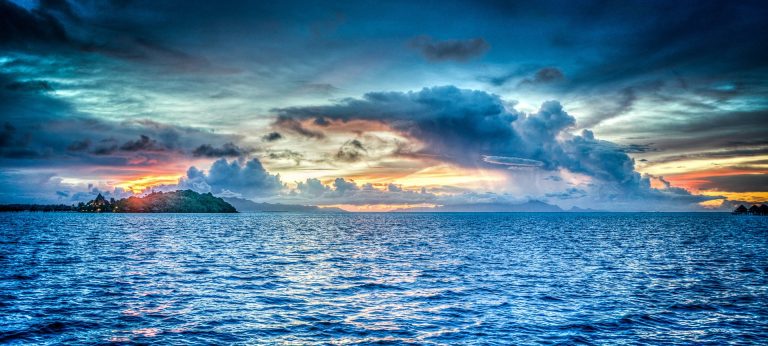
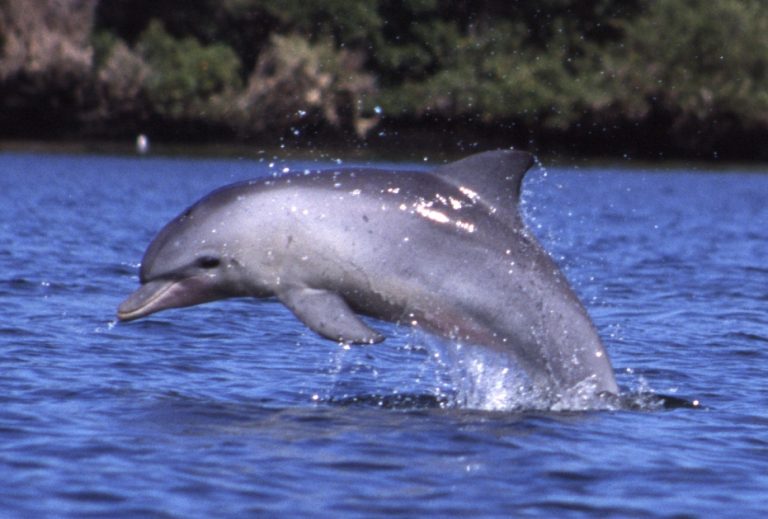
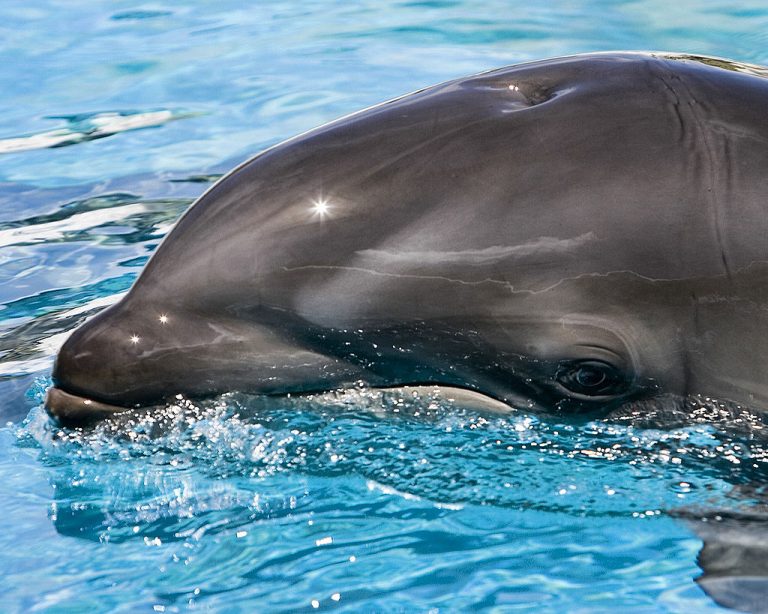
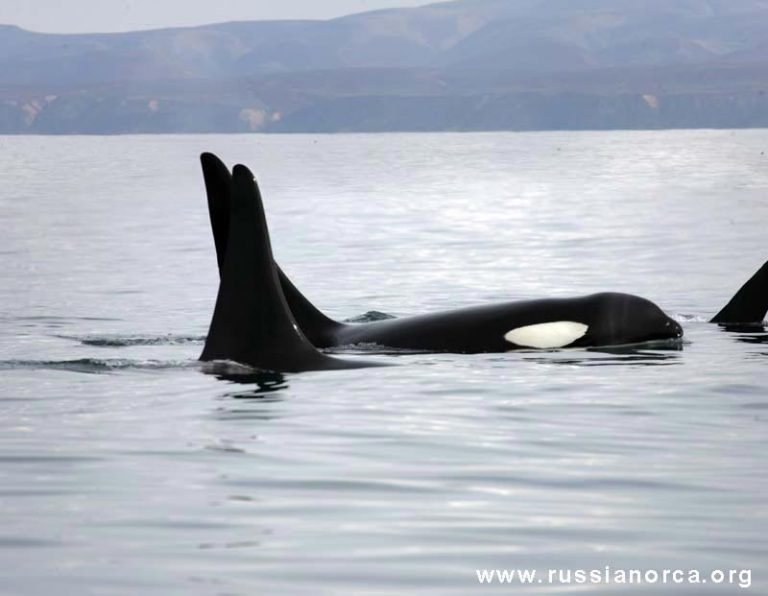
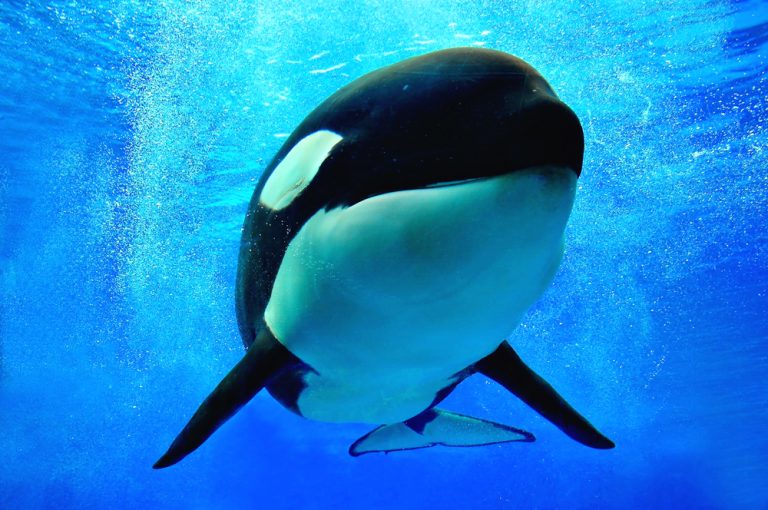
These are wild animals and should be treated as such.